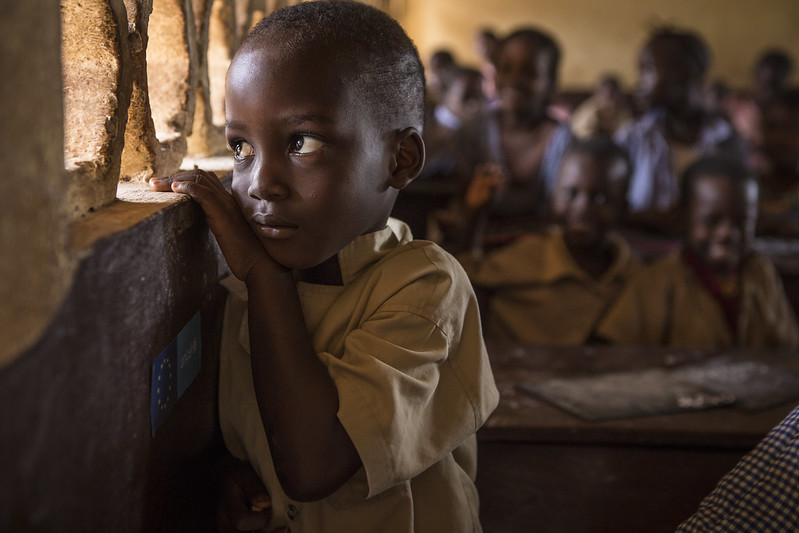
Expert analysis
20 November 2014
Displaced by disease: 5 displacement patterns emerging from the Ebola epidemic
When a whole town was displaced in the south of Guinea during the Ebola crisis, the link between disease and displacement began to emerge. With IDMC monitoring the crisis across the three countries most affected since the outbreak took place, we have identified five key displacement trends emerging.
On 14 November 2014 the UN Mission for Ebola Emergency Response (UNMEER) reported that the Guinean government had announced the withdrawal of troops from Womey, Nzérékoré prefecture, in the south of the country when a group of people raising awareness about the Ebola Virus Disease (EVD) were killed by angry residents.
Since the army’s deployment in September, there have been accusations of human rights violations at the hands of military personnel, resulting in the displacement of the whole town, with some 6,000 residents fleeing to forests in the surrounding area. This is the single largest reported incident of displacement during the Ebola crisis.
This is the first time IDMC has monitored displacement relating to disease, or biological hazard. Other countries with identified patterns of Ebola-related displacement include Mali, Sierra Leone and Liberia. IDMC’s analysis of the displacement reported across the affected countries identifies five internal displacement trends emerging from the epidemic.
1. Fleeing the virus
Fear of being exposed to the virus and falling ill has driven people to move as a preventive measure. This has been exacerbated by the fact that communities have not always had information about how the disease spreads and how to protect themselves, and fleeing has been a last resort—and a drastic measure—to steer clear from the virus.
2. Fleeing quarantine
Displacement due to communities fleeing from quarantine has been reported by humanitarian agencies on the ground. Reports have shown that many fled before quarantines were imposed in Guinea, Liberia, Sierra Leone, while others –as reported in Guinea - even fled during quarantine.
In many cases food, water and fuel were not provided before the quarantine was imposed, leaving many without these basics as soon as the quarantine was in place. With the quarantines cutting off thousands from their livelihoods, markets, and support networks outside of the quarantine area, many may be forced to flee the quarantine in order to secure their basic needs.
3. Seeking health care
In the affected countries, rural areas tend to be poorly served by health outreach workers and Ebola Treatment Units (ETUs) which in turn forces many to flee to urban areas in need of better health care. In some cases this movement has also been reported to be also taking place across borders. This was observed in mid-2014 with the movement of Ebola patients from Sierra Leone into Guinea, and from Guinea into Senegal.
4. Forced evictions and fleeing stigma
Patients who have been discharged from Ebola isolation units face stigma and other considerable challenges when attempting to return to their homes and communities. This includes reports of both survivors and victims being evicted, and in some cases, having their homes looted, or occupied.
5. Fleeing violence and rights violations
Womey is the most recent case highlighting displacement as a direct consequence of violence and rights violations by security forces, as has been previously reported by the West Africa Office for the High Commissioner for Human Rights (OHCHR) and Human Rights Watch.
As was the case in Womey, the militarisation of quarantined areas has been a cause of displacement in other affected areas also. What is clear is that this displacement relates to serious protection challenges that are so far not being reported systematically or captured by a protection monitoring mechanism.
Displacement issues in the context of the Ebola crisis have largely been overshadowed by broader human rights and protection concerns. These relate to issues of confinement of affected communities, and the restrictions on their human rights that such confinement imposes. Such right restrictions include the restriction on freedom of expression, and children’s right to education, for example.
The response to the Ebola outbreak faces many challenges and is overwhelmed by the sheer scale of the crisis, and the additional dimension of displacement only adds to the already enormous challenges faced. That said, national stakeholders, concerned international governments, and the humanitarian community responding to the crisis could make important inroads in the longer-term by factoring in durable solutions for IDPs earlier rather than later.
Universal health coverage and global health security
So why does universal health coverage matter to the wider goals of global health and human security and might it also have other benefits for development? First, if we consider the emergence of some infectious diseases of global concern (for example, artemisinin-resistant malaria, SARS, and Ebola), they occurred in settings without universal health coverage where health systems were unable to perform effective public health functions and deliver essential medical services, including hospital care for the grievously ill. In the current Ebola crisis, the longstanding lack of access to basic primary care, laboratories with insufficient capacity, and shortage of existing hospital infrastructure to isolate and treat infected people left communities with little trust in the health system, families with no help to tend for their seriously ill members, and fuelled the spread of the epidemic and its resulting death toll.
Faced with a public health emergency such as Ebola, timely and affordable access to effective diagnostics, medicines, and vaccines is crucial to provide an adequate response to this individual and collective health security issue, and is central to the realisation of the right to health.
Advisor/Consultant to the WHO


